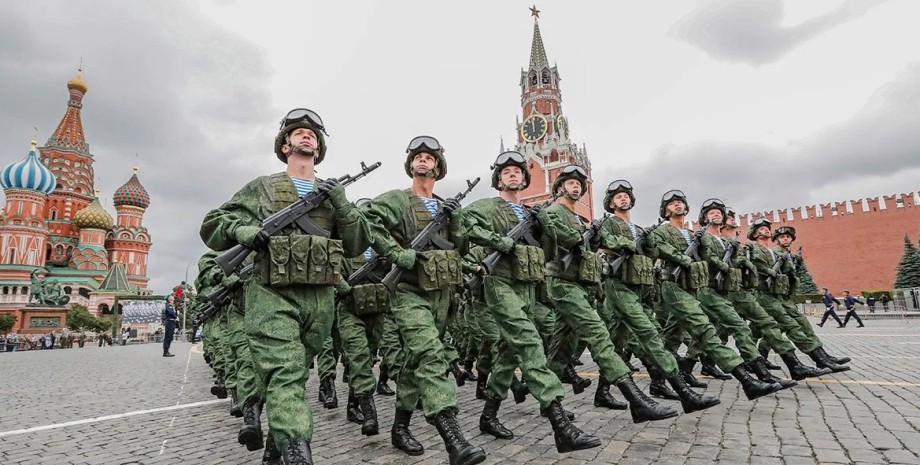
 By Victor Duda
By Victor Duda
This is stated in the analytical material of military experts Jack Wotling and Nick Reynolds, published on February 13 by the British Royal Institute of Joint Studies (Rusi). First of all, analysts have outlined the conditions of surrender of Ukraine, which are offered by Russian intermediaries.
Among them are the control of some major cities, including Kharkiv and Odessa, the neutral status and inadfection of Ukraine to NATO, as well as the transfer of power to the head of state approved by Moscow. "The only significant concession offered by Russia is that what is left of Ukraine can enter the European Union," experts say. Russia will increase pressure along the entire length of the Ukrainian Front in order to exhaust ammunition and personnel reserves of the Armed Forces of Ukraine.
Against this background, Russian special services will try to break the determination of Western allies to continue to provide military support. As soon as military assistance is significantly restricted, the Russian army will continue offensive operations, after which the pressure will be applied to Kiev in order to force the Ukrainian authorities to capitulate. This stage is basic for the formation of Russian forces and industrial production and is designed to win until 2026.
"It is important to understand that Russian goals can expand as they have succeeded, and given that the Kremlin has violated almost all important agreements with both Ukraine and NATO, there is no guarantee that even if Russia receives from negotiations that She wanted to not try to physically occupy the rest of Ukraine later, or it will not be bolder to use force in other places, "the authors of the material emphasized.
The Russian military began 2023 with extremely disorganized forces in Ukraine, which consisted of about 360,000 personnel. By the time of the counter -offensive of the Defense Forces of Ukraine, their number increased to 410,000. In addition, after the rebellion of Wagner PEC, the Kremlin managed to destroy the trend of creation of private armies and strengthen centralized management.
Despite the loss on the battlefield, the military command of the Russian Federation takes measures to guarantee the integrity of the front line. The units can usually be derived from the front line after they suffer losses of up to 30% (this is a point after which they are considered ineffective) and then restored.
The army of the Russian Federation does not lead large -scale offensive, but the command sets out the task of carrying out small tactical attacks, which at least inflict stable losses to Ukraine and enable Russian troops to capture and retain positions. Regarding the replenishment of personnel, the plans to increase the Russian army were not implemented to 1.
5 million - now the recruiters reach almost 85% of the set goals from a set of servicemen under contract to participate in hostilities in Ukraine. Therefore, the Kremlin believes that it will be able to maintain the current rates of personnel reduction by 2025. As for weapons, experts reported that in the arms of the army of the Russian Federation, which opposes the Armed Forces, are: the use of such arsenal of weapons is limited by a shortage of 220 mm of jet and 152 mm artillery ammunition.
Also, despite the losses of Front Aviation of the Russian Federation is still capable of carrying out combat missions. "The overall assessment is: although the quality of the Russian forces is unlikely to increase as long as the Armed Forces can maintain a significant level of personnel reduction, the Russians will be able to maintain a stable rate of attacks during 2024," experts summarize.
"Russia has mobilized its defense industry significantly, increasing the number of working changes and expanding production lines at existing enterprises, as well as returning previously preserved plants. This led to a significant increase in production volumes. For example, Russia supplies about 1500 tanks a year, and There are also about 3000 armored vehicles of different types, "analysts say. In addition, a month of Russian defense can produce 6 Iskander 9m723 missiles.
The production of missiles such as X-101 is also established. However, approximately 80% of tanks and other armored vehicles are not new, but repaired and upgraded from Russian military stocks, the authors of the material emphasize. Sanctional restrictions are also indicated, especially in the production of high -tech systems, as well as in the repair of various armored vehicles. However, the most serious restriction for Russia is the production of ammunition.
Thus, in order to realize its desire for significant territorial seizures in 2025, the Ministry of Defense of the Russian Federation estimated the need for industry in the production or supply of approximately 4 million 152 mm and 1. 6 million 122 mm artillery shells in 2024. And the indicators will increase to 1. 3 million 152 mm shells and 800 thousand 122 mm shells produced in 2024.
Moreover, the Russian Federation will not be able to significantly increase production in the coming years, unless new factories are created and no funds are invested in raw materials with a delay of more than five years. One way to solve the problem of ammunition deficiency is external help, such as North Korea.
If the Allies of Ukraine continue to provide an Armed Forces of the Armed Forces and provide them with support in training, which will allow Russian attacks in 2024, then Russia is unlikely to achieve significant success in 2025. So, if Russia has no prospects for success in 2025, given its inability to improve the quality of forces for offensive operations, it will be difficult for it to force Kiev to capitulate by 2026.
After 2026, problems in the Russian MIC will reduce the overall military potential of the Russian Federation.










All rights reserved IN-Ukraine.info - 2022